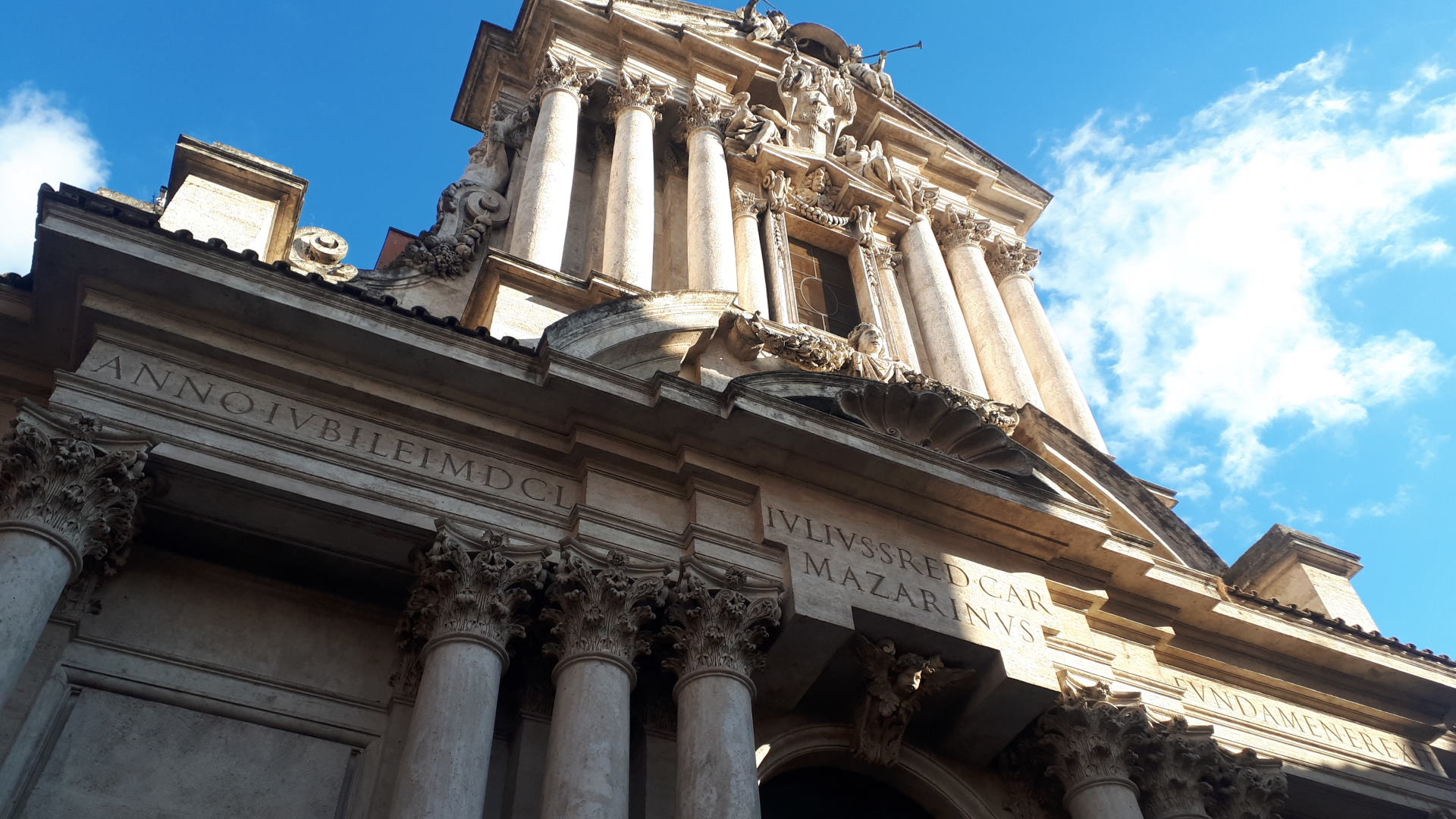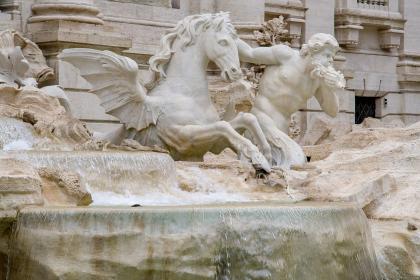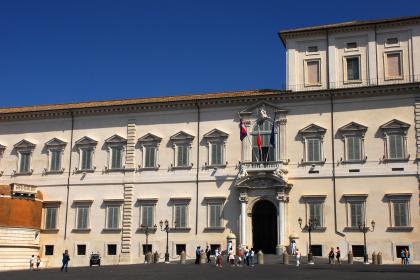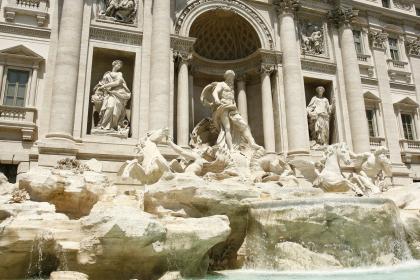
Ironic as he always was in his sonnets, 19th century Roman poet Giuseppe Gioacchino Belli called it a museum “de corate e de sciorcelli”, in short, of entrails, but this is just one of the nicknames that locals bestowed upon this church. Located in one of the most famous squares in the world, the one that houses the Trevi Fountain, it is often overlooked by the many tourists and locals. And unfairly, since it offers many reasons for interest.
In the Middle Ages the church was known as “Sant’Anastasio de Trivio” (trivium, from which the toponym Trevi would come, indicates a three-way intersection) and its original dedication was to the Persian martyr Anastasius alone, who was later joined by the Spanish saint Vincent. In the mid-17th century, the church was completely rebuilt by Martino Longhi the Younger on the orders of the powerful Cardinal Jules Mazarin, at the time prime minister of the young French King Louis XIV. The cardinal did not want to go unnoticed, as evidenced by his large coat-of-arms surmounted by the cardinal’s hat supported by four angels, in the center of the triple pediment, and the conspicuous dedicatory inscription between the two storey of the façade.
And arguably the most surprising feature of the church is the spectacular façade, which is fully Baroque for its richness and theatrical effects. The 18 free-standing columns adorning it, ten in the lower storey and eight in the upper one, earned the building another of its nicknames, the popular name of “canebrake”. But that’s not all: the entablature of the second storey is supported by the sculptures of two bare-chested women, an atypical presence for a sacred building. Equally unusual, if not more so, is the carving of a young woman’s head above the entrance door. Traditionally this is said to be a portrait of one of Mazarin’s nieces, known to the French court as the Mazarinettes. Some say it depicts Marie Mancini (the first love of King Louis XIV), who was given in marriage to Prince Lorenzo Onofrio Colonna and then left him by fleeing to France. An alternative identification suggests her sister Hortense, Mazarin’s favorite niece, a seductive and unconventional woman at the center of a large number of scandals for her adventurous love affairs following a disastrous marriage.
Until 1876, the church was also known as the “Pontifical Parish”, since it was located not far from the Quirinal palace, the then papal residence. So, beginning with Pope Sixtus V, when a newly deceased pope was embalmed his viscera (the so-called precordia, the contents of the abdominal cavity) were removed and put in a sealed jar which was then transported to and kept in this church. The custom continued for almost three centuries, until Leo XIII in 1903. An underground chapel under the main altar, which cannot be visited, still preserves twenty-two sets of papal organs: the populace called them outrageously the “sacred intestines” and in the colorful Roman dialect San Vincenzo and Anastasio became the church of the “frattaje”, guts, or a museum of entrails according to Belli. We may add that the latter had lived for twenty years just a few steps from here, in the nearby Palazzo Poli, and recited his “clandestine” sonnets in the lively literary salon of the Russian princess Zenaide Wolkonsky, buried inside the church with her husband and sister.
According to histories the church would also host the tomb of the Roman painter and engraver Bartolomeo Pinelli. The artist, an illustrator of the costumes of the Roman people, was buried here, without a monument or tombstone, in 1835 but his burial place remains an unsolved mystery. The long searches carried out in 1927 for locating his remains proved fruitless, so much so that someone claimed that, after the funeral, the body had been thrown away: anticlerical and excommunicated for not respecting the Easter fast, Pinelli would have been deemed unworthy to lie next to the “frattaje” of the popes. The Institute of Roman Studies, however, put a plaque in memory of the artist.
Rione II - Trevi

The Quirinale Palace and square

 Condividi
Condividi
Poli Palace - Trevi fountain

 Condividi
Condividi
Information
For opening and closing times and visiting instructions, please contact the Central Administration of Religious Affairs and the Fund for Buildings of Public Interest
 Condividi
Condividi
Location
To find out about all accessibility services, visit the Rome accessible section.












































